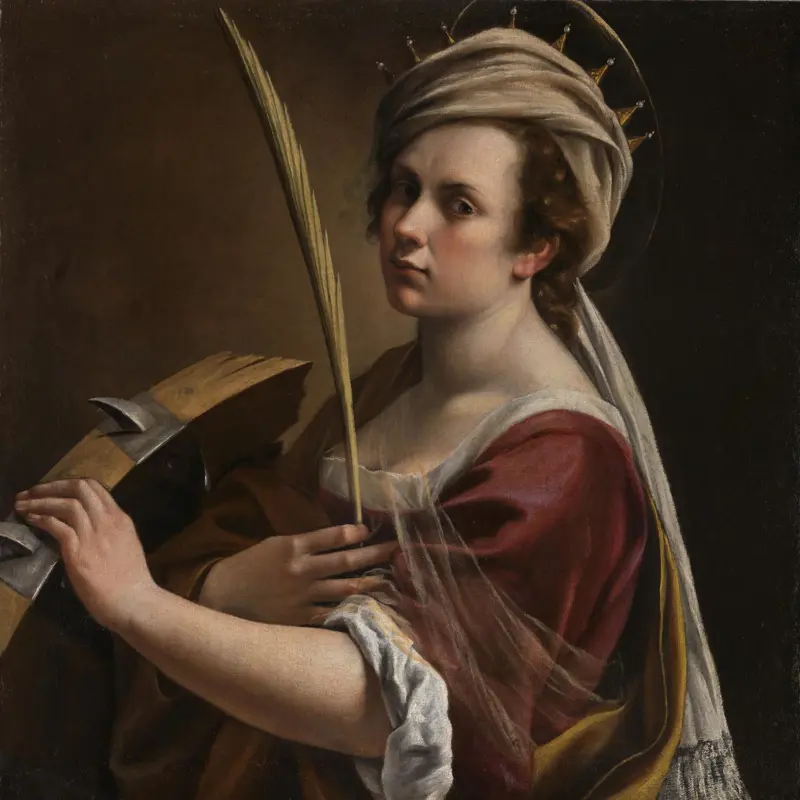Artemisia is the most celebrated female painter of the 17th century. She worked in Rome, Florence, Venice, Naples and London, for the highest echelons of European society, including the Grand Duke of Tuscany and Philip IV of Spain.
Artemisia was born in Rome, the eldest of five children and only daughter of Orazio Gentileschi, under whom she trained. Artemisia’s earliest signed and dated painting, ‘Susanna and the Elders’ (Schloss Weißenstein collection, Pommersfelden, Germany), is from 1610. A year later Artemisia was raped by the painter Agostino Tassi, an acquaintance and collaborator of her father’s. An infamous trial, meticulously recorded in documents that survive, ensued in 1612. Tassi was found guilty and banished from Rome, though his punishment was never enforced.
Following the trial Artemisia married a little-known Florentine artist by the name of Pierantonio di Vincenzo Stiattesi, and left Rome for Florence shortly thereafter. There she had five children and established herself as an independent artist, becoming an early woman member of the Academy of the Arts of Drawing in 1616. Artemisia returned to Rome in 1620, beset by creditors after running up debts, and she remained there for 10 years (except for a trip to Venice in 1628).
From 1630 she settled in Naples, where she ran a successful studio until her death. She briefly visited London in 1639, perhaps to assist her ailing father on the ceiling painting of the Queen’s House in Greenwich (now at Marlborough House in London), but was back in Naples the following year. The precise date of her death is not known but a recently discovered document records her still living in Naples in August 1654.

